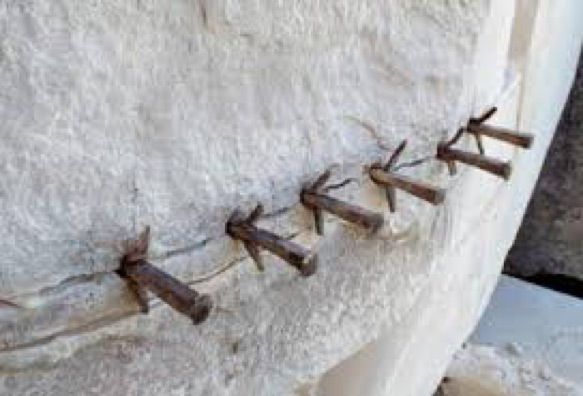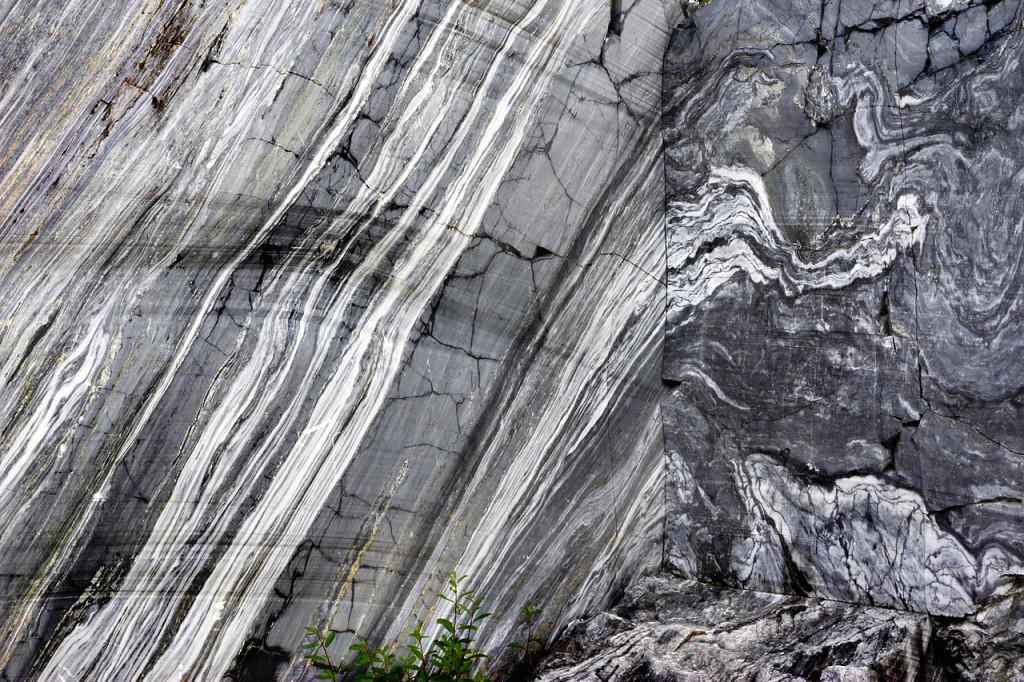Articles
Catching Dust
February 24, 2023If using power tools we create dust. We are wearing our masks so we aren’t breathing it in. But the neighbors… Wood dust collectors do not seem to work well. You can make a downdraft table but that is good for small projects ...
Hands Down
February 24, 2023Visual references for hand proportions Marble hands by Patrick Doratti, Ted Fleming, and Art Wells ...
Pinning
February 24, 2023Bases are the frames for sculptures. To mount stone to a base you must use a pin to connect them (just glue will break apart). This should be a stainless steel rod so it won’t rust or a brass turning pin. To mount a turning pin drill the ...
Photographing Your Masterpiece
February 24, 2023To create a professional portfolio or to impress friends, it is important to have a clear picture of your work. Set up a backdrop appropriate to let the sculpture stand out. Black backgrounds avoid some shadow problems. Double-check that t ...
PPE for Stone Sculpting
February 24, 2023All the stones sold from 2sculpt are safe to carve. That means no asbestos, arsenic, radioactivity, or trans-fats. Still, you should always wear personal protective equipment (PPE), namely a paper mask and safety glasses. If you are usin ...
Power Tools
February 24, 2023The most important tools are the basic hand chisels, a 1.5# hammer and a rasp. The first power tool should be an angle grinder (7.5 amps or more) and a diamond blade (or a Dremel if working very small). The next step is a big but wonderf ...
Enlightenment of Carving Stone
February 24, 2023Enlightenment of Carving Stone (by a sculptor, not a geologist) There are thousands of possible stones to carve. Each has its own characteristics. They can be classified by hardness, workability, “bedding” plane, and chemical com ...
Heads Up
March 5, 2019Useful diagrams for sculpting the human head Head Proportions (very generalized): 1. Distance between eyes is an eye width 2. The width of the nose is about one eye. 3. The eyes are at the vertical center. 4. The ears go from nose to e ...
Dremel Etching
March 5, 2019Mark Donadio showed me how he etched a picture onto stone. He uses hobbiest Mod Podge to glue a picture to a flat stone. After it dries thoroughly he can rub the paper away with a sponge. The picture is then on the surface. He then uses ...
Dyeing Alabaster
March 5, 2019You can change the color of clear alabaster. This technique has been perfected in Italy. However, the dye is toxic and should not be flushed down the drain. If you want to experiment get the wood dye called ANILINE. Warm water to room te ...
Flying Hammer Heads
March 5, 2019Petro warns against flying hammerheads. Dry weather makes wood handles shrink. Soak the head and handle end in a solution of antifreeze (Propylene Glycol specifically) and linseed oil (50/50%). The solution gets into the wood cells and t ...
Crap––It Broke!
March 5, 2019I have been told by a sage that there are two legitimate ways of dealing with flaws: 1) glue it before it breaks, and 2) accentuate rather than hide the break. I was unenthused about this sculpture. I left it in a bad spot and it got ki ...
Sanding Tips Pt. 2
March 5, 2019I use the first two or three grits of sandpaper dry and the rest wet. I wash off the stone between grits and allow it to dry for inspection before continuing. Use an old sheet of 1000-grit sandpaper for a few minutes between grits to bri ...
Blade Safety
March 5, 2019First, those black abrasive blades are dangerous – my commentary. Diamond blades are wonderfully fast, long lasting and safe if used wisely. Use no more than a 5” blade on a 4.5” angle grinder (<12,001rpm): a 7” blade on a < ...
Blade Types
March 5, 2019Use the right diamond blade for the stone and tool. Sintered blades are great for alabaster, limestone, and very hard marbles. They are the most durable but are not good for soft or medium marbles. Electroplated blades are for alabaster ...
Devilish Details
February 27, 2019Wanna get the finest detail? Try small carbide burrs. These are double cut steel burrs in 1/32” to 1/8” sizes for Dremel machines. With a steady hand you can get the most minute hairs or textures. The three basic types are rounded, f ...
Italy: Land of Sculpture
June 19, 2018Yes, they are everywhere. I found many off the beaten path last year. A visit to the Cimitero Monumentale di Staglieno demonstrates this abundance. Since the mid-19th century, Genoans honor their deceased with elaborate marble carving ...
Enlarging
June 19, 2018There are several ways to enlarge or “point up” from a model. It is best to use an even increment of enlargement (2x, 3x, etc.) to make the math easier. (1) Use calipers and a ruler to transfer dimensions. (2) Build ...
Make it Flat
June 18, 2018To laminate properly the surfaces must be very flat to avoid gaps. For large stones, we used power equipment, in particular, a Blackcat which is a diamond grinding wheel on an angle grinder. It still required laying a steel flat edge over t ...
The Miracle Workers: Rouge, Tin and Magic Potion
June 18, 2018“Rouge” literally means red. Not so in the polishing business: it means fine abrasive. After sanding up to 600 (higher on darker stones) you may still want that deeper color and shine. “Rouge” may be the answer. This is a block or ...
Chemistry of Finishing
June 18, 2018Sand, sand, sand. The more scratches removed the deeper the color and the more gloss. If you “finish” sanding and then wet the stone it might look much better. You can continue sanding to get more scratches out or apply a coat of color ...
Aluminum Oxide vs. Silicon Carbide vs Diamonds
June 18, 2018Sandpaper and grinding tools made with aluminum oxide (AO) do not work well with stone. Silicon carbide (SC) grains develop new sharp edges as they wear so they are the stone-cutting choice – unless you have the diamond option. &nbs ...
Sanding and Finishing
June 18, 2018There is no “magic wand” to finishing a stone sculpture. It is just plain patience and work. The critical work takes place in the beginning – getting the worst scratches out. The steps are: flat chisel, rasps, sandpaper, rouge, ...
What’s So Hard?
June 18, 2018When choosing a stone for sculpting we must consider its consistency (how fragile it may be), it’s patterning (how busy it is), and its workability (its hardness). The MOH scale is a quickly accelerating rating of stone from “1” f ...
Lifting: Back Preservation
June 18, 2018Yeah, stone is heavy. Alabaster weighs 160 pounds per cubic foot and marble 170 pounds. Brute strength lifting is not wise: thought and cleverness rules here. Think of the ingenuity of the Egyptians or Mayans of erecting tall stone monu ...
The Mounting Process – Summarized
June 18, 2018Get a flat and level surface to work upon Determine sculpture position; secure and hold it Mark bottom level line Cut bottom; check for flatness (might use a tile) On larger bases, cut out the center of the bottom to make flatten ...
Drilling Basics
June 18, 2018All the stones sold from 2sculpt are safe: no asbestos, arsenic, radioactivity, or trans-fats. Stones of which to be cautious are sandstone and granite (silica), soapstone (asbestos), and jade and copper (heavy metals). This is not to say t ...
Chisels
June 18, 2018There are hand and air hammer chisels – and rarely should the two meet. That is an air hammer chisel should never be struck by a hand-held hammer. That distorts the shank of the chisel which, in turn, distorts the piston of the air hamm ...
Air Hammer Usage
June 18, 2018Air hammers are a major investment. However, they increase speed to about 6 to 7,000 blows/minute. Still, you stay in touch with the stone meaning that you do not lose control; stay “spiritually” connected. Too often with a saw or gri ...
Splitting/cutting stone
March 16, 2017Ravinder from India once drilled a series of small holes in a 6’ deep block of marble. He inserted feathers and wedges in each hole and hammered a little on them each hour for a couple of days. Sure enough, the stone developed a crack ...
Sandbags
July 1, 2015For smaller or uneven stones a sandbag will stabilize the art-to-be. You can cut the legs off an old pair of jeans, fill it 2/3rds with play sand, and seal the ends with plastic ties. I like using old truck tire tubes from my car repair pla ...
Heavy Lifting
June 17, 2015Don’t. One wrong twist or extension can have long-term implications. I got impatient and reached over the edge of my trailer to lift the edge of a heavy stone just a little. Cantilevered at a 90-degree angle I did the worst thing and pull ...
Marble Formation
May 7, 2015Marble is compressed shells and bones. Its adventure starts on the seabed where these calciums deposit and eventually become limestone. Then one of two forces, volcanic activity or tectonic plate movement, compress and heat the limestone ch ...
Glue
April 22, 2015Sometimes we need to secure a small crack, a micro-fissure, in a stone. Most often a few drops of super glue (Cyanoacrylate) will hold it until you finish working the area. I use the inexpensive stuff but for tight cracks, you might conside ...
Sanding Tips
January 18, 2015You must use silicon carbide sandpaper (or diamond sheets or pads). The grains of aluminum oxide paper quickly round out and stop cutting. I use the first two grits of sandpaper dry and the rest wet. I wash off the stone between grits and a ...
Mounting Sculptures
January 18, 2015A base is like a frame. It accentuates the sculpture. It is important to select a base that is not too busy or large for the sculpture. You don’t want to take attention away from your masterpiece. You want to have a stable base but so ...
General Safety
December 14, 2014All the stones sold from 2sculpt are safe: no asbestos, arsenic, radioactivity or trans-fats. Still, you should always wear a paper mask and safety glasses. If you are using power tools and therefore creating a lot of dust you need ear prot ...
Power Tools
October 11, 2014The most important tools are the basic hand chisels, a 1.5# hammer and a rasp. The first power tools should be an angle grinder (7.5 amps or more) and a diamond blade (or a Dremel if working very small) and perhaps a straight “dieR ...


